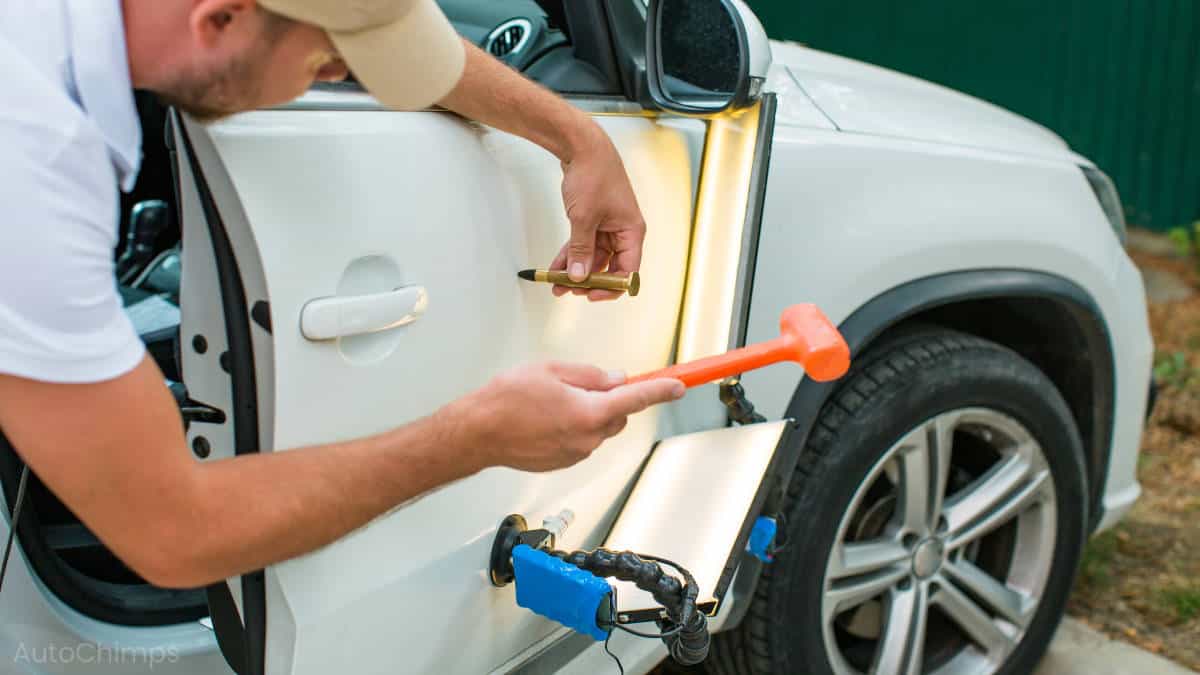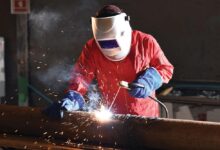Factors Affecting Dent Repair Costs: Size, Location, and Paint Damage

Dents and dings on a vehicle can be unsightly and diminish its overall appearance. Understanding the factors that affect the cost can help you make informed decisions and manage your budget effectively when it comes to dent removal. Several key factors influence the dent repair costs, including the size of the dent, its location on the vehicle, and whether there is any accompanying paint damage. In this article, we will explore these factors in detail, providing valuable insights into dent repair’s cost considerations.
Size of the Dent:
The size of the dent plays a significant role in determining the repair cost. Larger dents typically require more extensive work and time to restore, resulting in higher repair costs. Smaller dents, such as those caused by hail or minor impacts, are generally easier to fix and involve less labor and materials. Repairing a small dent may involve techniques such as paintless dent repair (PDR), which can be a more cost-effective than traditional methods.
Location of the Dent:
The location of the dent on the vehicle also affects the repair cost. Dents in easily accessible areas, such as the hood, trunk, or side panels, are generally easier to fix and require less effort. Accessibility allows technicians to gain better access to the dent, making the repair process more efficient. On the other hand, dents in hard-to-reach areas, such as door edges, wheel arches, or complex contours, may involve additional labor and specialized tools, potentially increasing the repair costs.
Paint Damage:
The presence of paint damage is another important factor influencing auto dent repair costs. If the dent has resulted in chipped or cracked paint, it will require additional steps for proper repair. To ensure a seamless finish, the damaged area may need to be prepared, including sanding, priming, and painting. This adds complexity to the repair process and requires additional materials and labor, contributing to higher costs. However, if the dent has not caused any paint damage, techniques such as PDR can be employed, which are generally more affordable and less time-consuming.
Type of Repair Technique:
The choice of repair technique also impacts the cost of dent repair. Various methods are available, including traditional dent repair, PDR, and the use of auto body fillers. Each technique has its own cost considerations:
- Traditional Dent Repair: This involves using specialized tools and techniques to reshape the metal from the panel’s backside. It may require disassembling parts, such as removing trim or interior panels, to access the dent. Traditional dent repair is typically more time-consuming and labor-intensive, resulting in higher costs.
- Paintless Dent Repair (PDR): PDR is a technique used to repair minor dents without the need for paint or fillers. Skilled technicians use specialized tools to massage the metal from the inside carefully, restoring it to its original shape. PDR is a cost-effective option for smaller dents with no paint damage, requiring less time and materials than traditional methods.
- Auto Body Fillers: For dents with more significant damage or paint damage, the use of auto body fillers, such as Bondo, may be required. This technique involves applying filler material to the damaged area, shaping it, and sanding it to achieve a smooth surface. Auto body fillers can be a cost-effective option, but they may require additional steps, such as priming and painting, which can increase the overall repair costs.
Additional Factors to Consider:
Apart from the main factors mentioned above, there are a few additional factors that can influence dent repair costs:
- Vehicle Make and Model: The make and model of the vehicle can impact the dent repair costs. Some vehicles have more complex body designs or specialty materials requiring specialized repair techniques, increasing the overall repair cost.
- Labor Rates: Labor rates can vary depending on the location and the expertise of the auto body shop. Higher labor rates can contribute to higher overall repair costs.
- Insurance Coverage: If the dent repair is covered by insurance, your cost may be reduced or eliminated based on your policy coverage. It is important to check with your insurance provider to understand the terms and conditions of your coverage.
- Additional Damage: In some cases, a dent may be accompanied by additional damage to the vehicle, such as broken trim, shattered glass, or mechanical issues. Repairing these additional damages will incur extra costs beyond the dent repair.
Conclusion:
Don’t let dents dent your budget! At Eastwood, we understand that dent repair costs depend on various factors. Discover a wide range of top-quality products and supplies for all your repair needs at Eastwood! We’ve got you covered whether you’re tackling dents, scratches, or any other automotive repair project. From dent removal tools to paint touch-up kits, our extensive selection ensures you’ll find the perfect solutions for your repair tasks. With Eastwood’s high-performance products, you can achieve professional results at an affordable price. Don’t let repairs drain your wallet—shop at Eastwood and get the tools and supplies you need to restore your vehicle to its former glory. Visit our store today and unleash your repair prowess!








